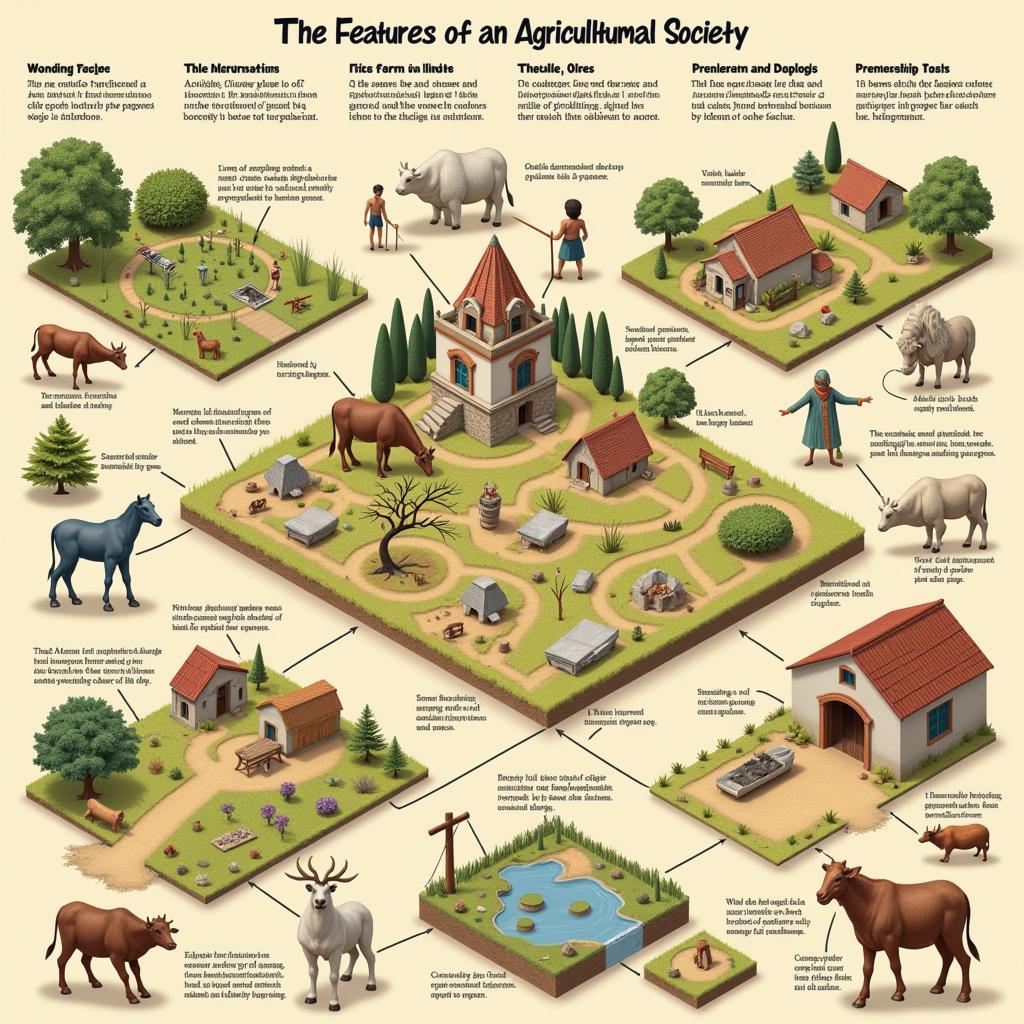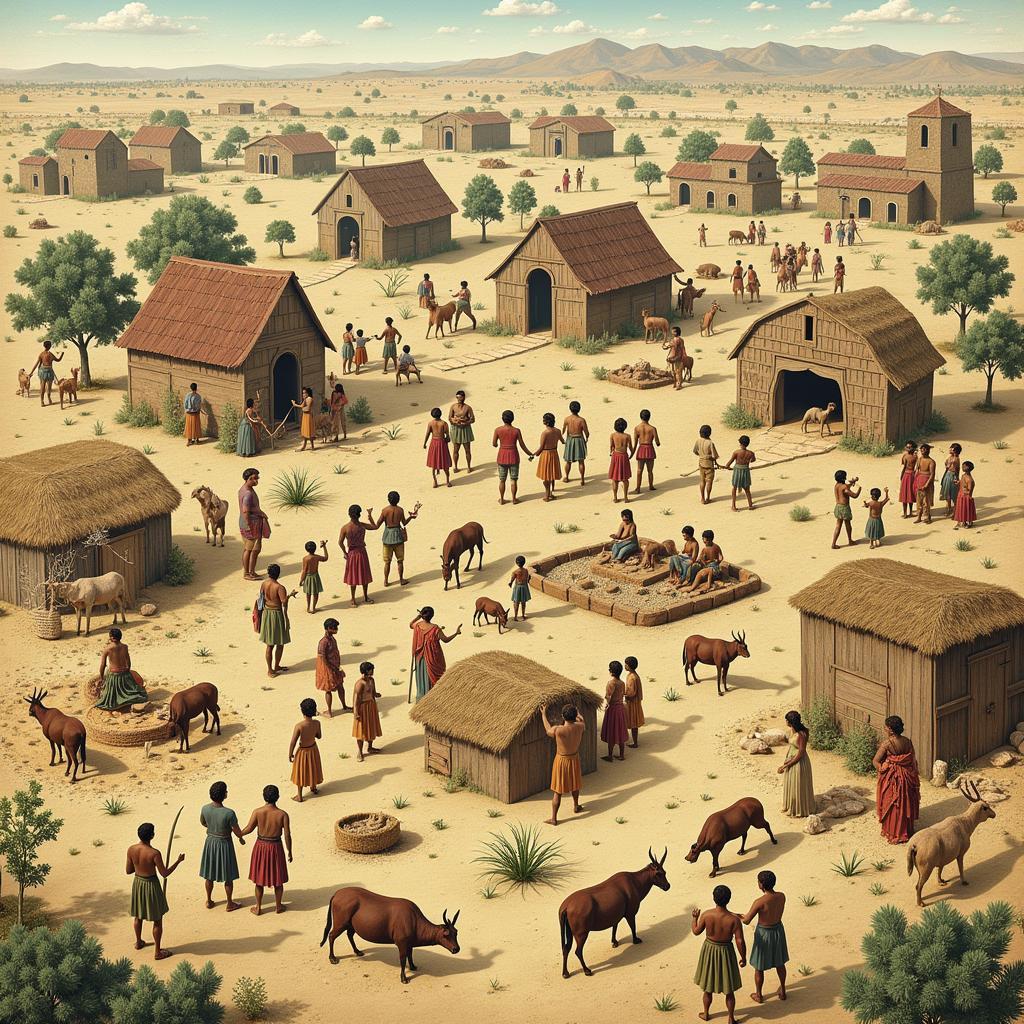For centuries, humans lived as hunter-gatherers, their lives intrinsically tied to the rhythms of nature. However, around 10,000 BCE, a profound shift occurred—the rise of agriculture. This innovation fundamentally reshaped human societies, paving the way for the civilizations we know today. But what exactly are agricultural societies, and how did they differ from the hunter-gatherer groups that preceded them?
 Image depicting key characteristics of an agricultural society
Image depicting key characteristics of an agricultural society
Understanding Agricultural Societies: Beyond the Fields
While the term might seem self-explanatory—societies that practice agriculture—it encompasses far more than just the act of cultivating crops or raising livestock. It represents a paradigm shift in human history, characterized by a complex interplay of social, economic, and technological advancements.
So, Which Of The Following Is True About Agricultural Societies? To answer this, let’s delve into the defining features that set them apart:
1. Sedentary Lifestyle and Permanent Settlements: Unlike their nomadic hunter-gatherer predecessors, agricultural societies embraced a sedentary lifestyle. The need to tend to crops and livestock year-round necessitated permanent settlements, leading to the establishment of villages and, eventually, cities.
2. Food Surplus and Population Growth: Perhaps the most significant impact of agriculture was the ability to produce a food surplus. This surplus not only ensured greater food security but also fueled a dramatic increase in population density.
3. Specialization of Labor: With a stable food supply, individuals could devote their time to specialized tasks beyond farming. This led to the emergence of artisans, craftspeople, religious leaders, and other specialized roles, fostering social complexity and innovation.
4. Social Stratification: As societies became more complex, so did their social structures. Agricultural societies saw the development of social hierarchies based on factors like land ownership, occupation, and accumulated wealth.
5. Technological Advancements: The need for efficient farming practices spurred technological innovation. From the development of irrigation systems to the invention of the plow, agricultural societies witnessed a surge in tools and techniques designed to enhance productivity.
A Complex Tapestry: The Legacy of Agricultural Societies
The transition from hunter-gatherer bands to settled agricultural societies was a gradual and multifaceted process, varying considerably across geographical locations and time periods.
“It’s crucial to remember that the term ‘agricultural society’ isn’t a monolithic entity,” explains Dr. Sarah Miller, an archaeologist specializing in early agricultural communities. “There was significant diversity in social organization, religious practices, and technological advancements among different agricultural societies.”
 Image illustrating the variations in social structures, religious practices, and technologies across different early agricultural societies.
Image illustrating the variations in social structures, religious practices, and technologies across different early agricultural societies.
The Enduring Impact: A Legacy Woven into the Present
Despite the passage of millennia, the legacy of those early agricultural societies continues to shape our world today. Our dependence on agriculture, the complex social structures we navigate, and even the layout of our cities—all are echoes of a revolution that began with the simple act of planting a seed.